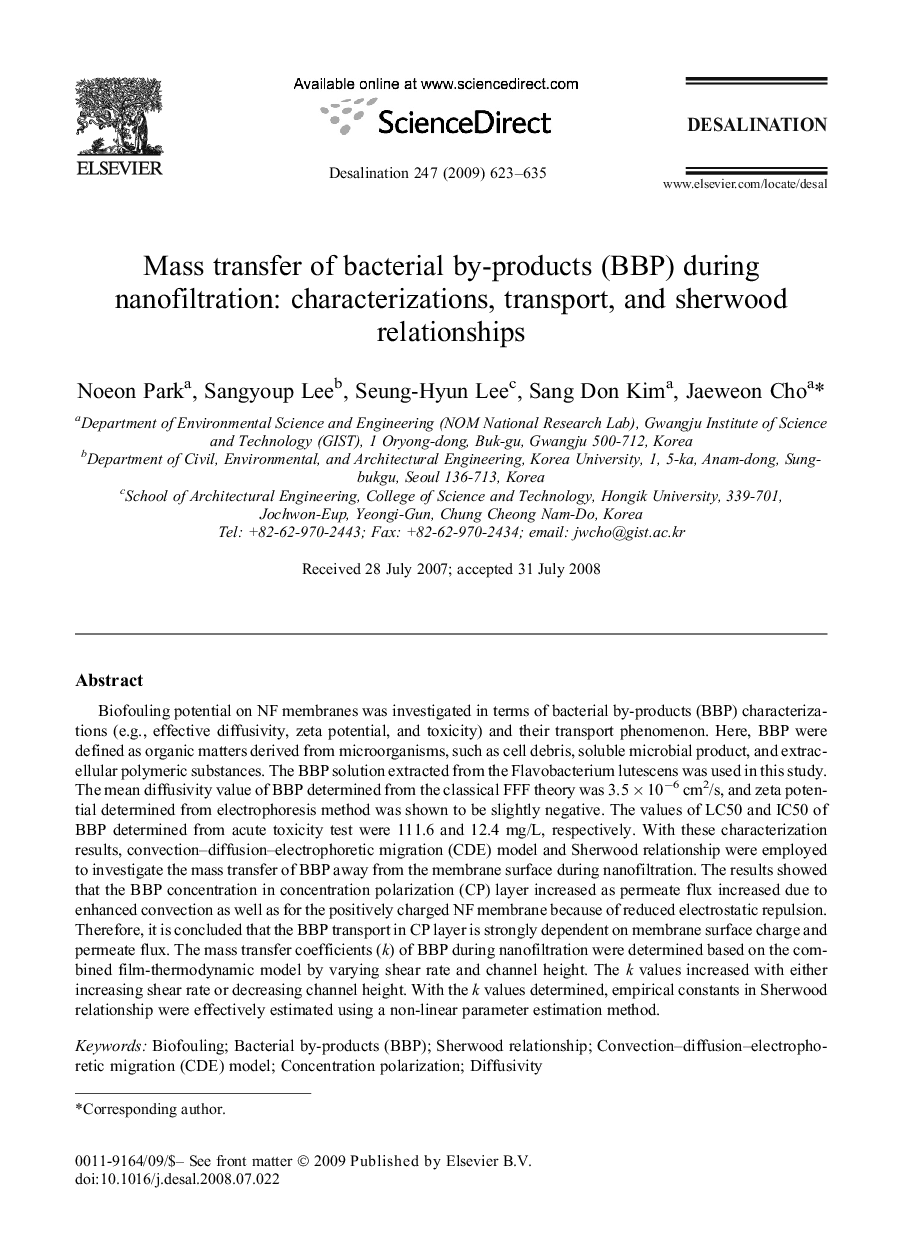| کد مقاله | کد نشریه | سال انتشار | مقاله انگلیسی | نسخه تمام متن |
|---|---|---|---|---|
| 626573 | 1455443 | 2009 | 13 صفحه PDF | دانلود رایگان |

Biofouling potential on NF membranes was investigated in terms of bacterial by-products (BBP) characterizations (e.g., effective diffusivity, zeta potential, and toxicity) and their transport phenomenon. Here, BBP were defined as organic matters derived from microorganisms, such as cell debris, soluble microbial product, and extracellular polymeric substances. The BBP solution extracted fromthe Flavobacteriumlutescens was used in this study. The mean diffusivity value of BBP determined from the classical FFF theory was 3.5 × 10−6 cm2/s, and zeta potential determined from electrophoresis method was shown to be slightly negative. The values of LC50 and IC50 of BBP determined from acute toxicity test were 111.6 and 12.4 mg/L, respectively. With these characterization results, convection–diffusion–electrophoretic migration (CDE) model and Sherwood relationship were employed to investigate the mass transfer of BBP away from the membrane surface during nanofiltration. The results showed that the BBP concentration in concentration polarization (CP) layer increased as permeate flux increased due to enhanced convection as well as for the positively charged NF membrane because of reduced electrostatic repulsion. Therefore, it is concluded that the BBP transport in CP layer is strongly dependent on membrane surface charge and permeate flux. The mass transfer coefficients (k) of BBP during nanofiltration were determined based on the combined film-thermodynamic model by varying shear rate and channel height. The k values increased with either increasing shear rate or decreasing channel height. With the k values determined, empirical constants in Sherwood relationship were effectively estimated using a non-linear parameter estimation method.
Journal: Desalination - Volume 247, Issues 1–3, October 2009, Pages 623-635